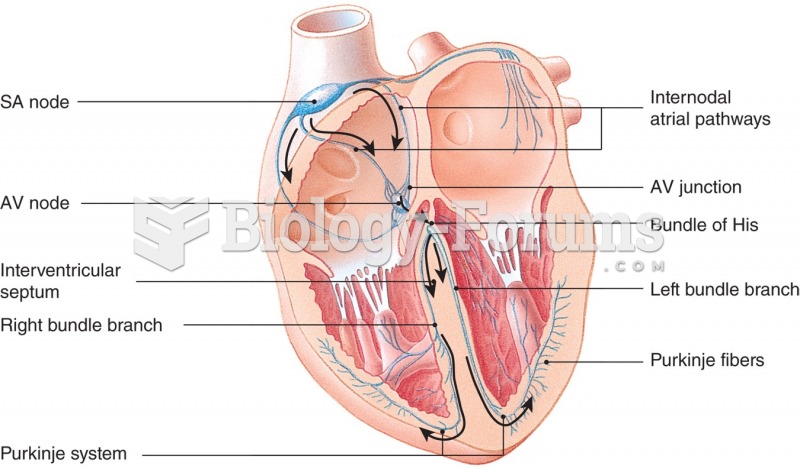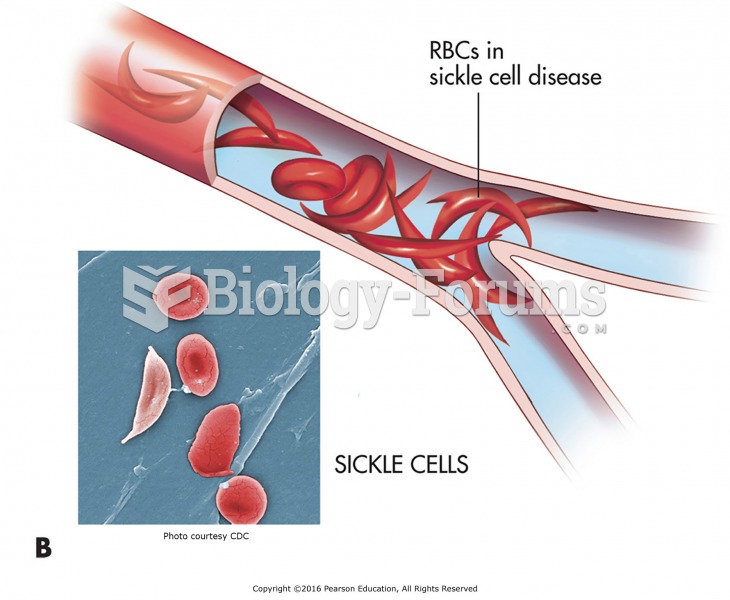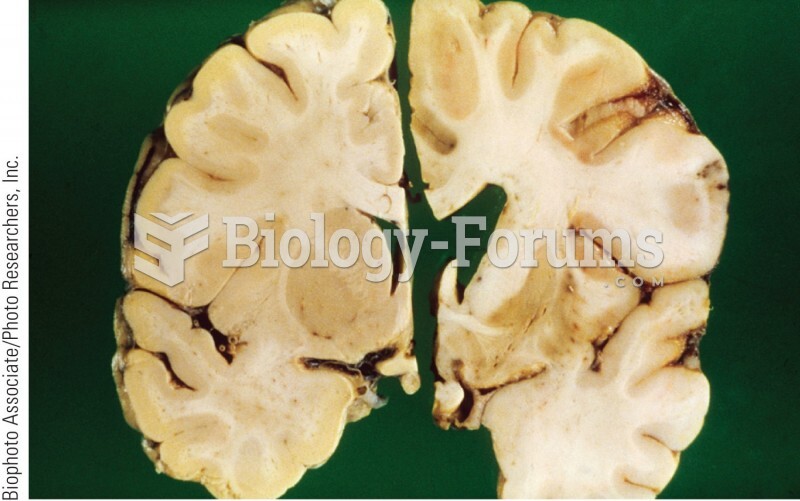|
|
|
The first war in which wide-scale use of anesthetics occurred was the Civil War, and 80% of all wounds were in the extremities.
Drug abusers experience the following scenario: The pleasure given by their drug (or drugs) of choice is so strong that it is difficult to eradicate even after years of staying away from the substances involved. Certain triggers may cause a drug abuser to relapse. Research shows that long-term drug abuse results in significant changes in brain function that persist long after an individual stops using drugs. It is most important to realize that the same is true of not just illegal substances but alcohol and tobacco as well.
Eat fiber! A diet high in fiber can help lower cholesterol levels by as much as 10%.
Thyroid conditions may make getting pregnant impossible.
After a vasectomy, it takes about 12 ejaculations to clear out sperm that were already beyond the blocked area.







